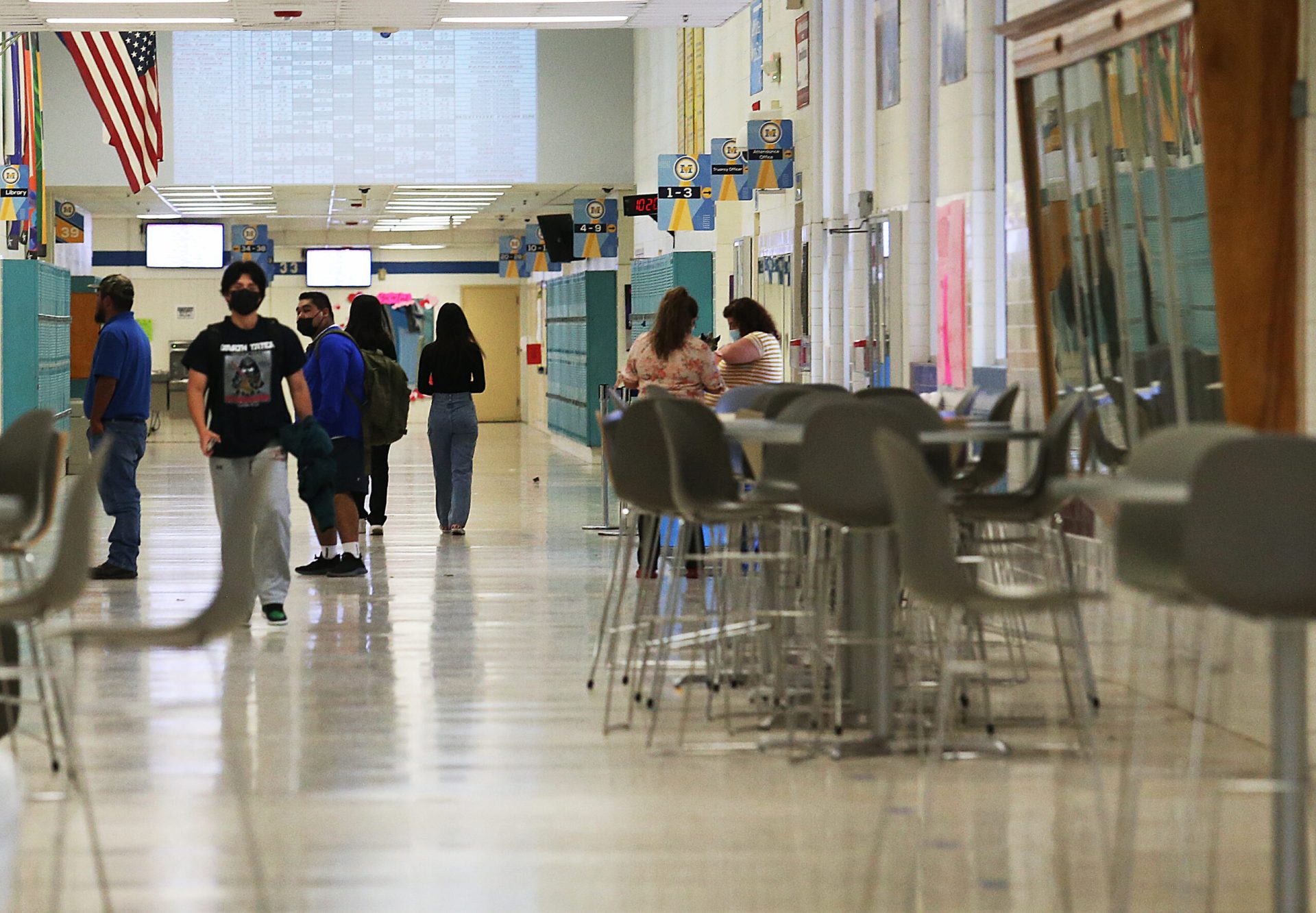Public school districts across the country are dealing with revenue shortfalls, and the Rio Grande Valley is no different. McAllen is looking to end cooperative agreements with the city of McAllen and other entities, and cancel planned construction of theaters at McAllen, Memorial and Rowe high schools.
Brownsville might close three elementary schools, moving their students to nearby schools. The district already has shuttered other campuses in recent years.
The problem isn’t limited to the Valley; the Dallas school district isn’t filling job openings, hoping normal attrition keeps them from having to law people off. Fort Worth has laid off several teachers and staff, and one Houston-area district has let all library staff go.
The biggest problem is falling enrollment. State and federal funding to public schools is tied to enrollment; fewer students mean less revenue, and districts are facing budget crunches as a result.
Several factors contribute to enrollment losses, and they won’t be alleviated anytime soon, if ever.
The most immediate, and noticeable, factor is the recent COVID-19 pandemic. Schools across the country were closed, including those in the Valley, and when they reopened many students never came back.
Another factor is the growing number of options many families have, including private and charter schools.
Yet another is the general slowdown in population growth, particularly in South Texas.
For years this region enjoyed growth rates higher than most of the country, fueled by healthy birth rates and steady immigration from both the north and the south. Recently we have seen lower rates in both areas.
 Students and staff seen in a McAllen Memorial High School hallway on February 2022. (Delcia Lopez | dlopez@themonitor.com)
Students and staff seen in a McAllen Memorial High School hallway on February 2022. (Delcia Lopez | dlopez@themonitor.com)But we’re not alone — slower population growth is being felt everywhere, and many people already fear that not too far into the future we won’t have enough young workers to offset retirements, or enough taxpayers to maintain government programs without substantial tax rate increases.
All this means that traditional public schools don’t just have to start competing for students, they need to learn frugality measures that never were necessary before.
Schools and their districts should reevaluate the need for large, highly paid administrative staffs. Maybe schools don’t need so many assistant principals or specialized administrators. Maybe they don’t all need full contingents of secretaries and assistants.
Closing and consolidating campuses seems an attractive option, as it helps reduce overhead and maintenance costs, and can reduce redundant classes that aren’t filled at any one campus but could justify one course with combined enrollment.
They should, however, think twice about closing unique and popular courses that set them apart from other schools. Such classes give students and their families a reason to stay there instead of seeking other options.
Many people have said that school districts have been too quick to raise taxes and never have had to watch their spending as closely as they should. Now they have to.
Who knows? The process might lead to a few epiphanies and streamlining and austerity measures that can make public schools even better — and save taxpayers money in the long run.
The post Editorial: Schools increasingly finding they are having to address smaller enrollment, budgets appeared first on MyRGV.com.
 (2).png)
 1 month ago
49
1 month ago
49








 English (US)
English (US)